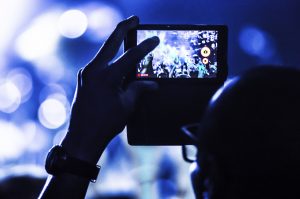 Formerly entertainment oriented websites such as Facebook (NASDAQ:FB) and Twitter (NYSE:TWTR) are now becoming platforms for citizen journalists to document the things going on in their communities. In the past two months, thousands of social media users have watched some of the biggest news events of the year through live streaming videos posted by other users. Notably, Twitter’s Periscope provided live coverage of a congressional sit-in over gun control last month after C-SPAN cameras were turned off.
Formerly entertainment oriented websites such as Facebook (NASDAQ:FB) and Twitter (NYSE:TWTR) are now becoming platforms for citizen journalists to document the things going on in their communities. In the past two months, thousands of social media users have watched some of the biggest news events of the year through live streaming videos posted by other users. Notably, Twitter’s Periscope provided live coverage of a congressional sit-in over gun control last month after C-SPAN cameras were turned off.
Last week, Diamond Reynolds live streamed on Facebook the death of her fiance, Philando Castile, at the hands of police officers in Falcon Heights, Minn. On the strength of that live video, Minnesota’s governor brought in the Justice Department to investigate whether the police action was justified. The graphic Facebook Live video depicting Castile’s death was removed shortly after it was posted. However, Facebook attributed the takedown to a “technical glitch” and the video was restored after about an hour.
One day after Reynolds’s video, Facebook Live broadcast the terrifying scene in Dallas, where a sniper killed five police officers, wounding seven more plus two civilians. Facebook wrote in a blog post, “Live video allows us to see what’s happening in the world as it happens. Just as it gives us a window into the best moments in people’s lives, it can also let us bear witness to the worst.”
Facebook reconsidered its live video policy after thousands of people watched people die in real time. Facebook has now posted clearer guidelines for Facebook Live video posters. Facebook Live streams of violence or graphic content is not acceptable, unless it serves a higher purpose. Videos or comments that glorify violence will be removed. The company said in their statement, “We’ve learned a lot over the past few months, and will continue to make improvements to this experience wherever we can.”
Using social media websites as news providers, circulators, and facilitators isn’t new. Many have attributed the Arab Spring revolutions in Tunisia, Bahrain, Egypt, and Libya to the widespread use of Twitter and other social media sites. According to a report by The Pew Charitable Trusts, roughly 80 percent of social media users say they use Twitter or Facebook as a news resource. About 66 percent of Facebook users use the site for news today, up from 47 percent in 2013.
